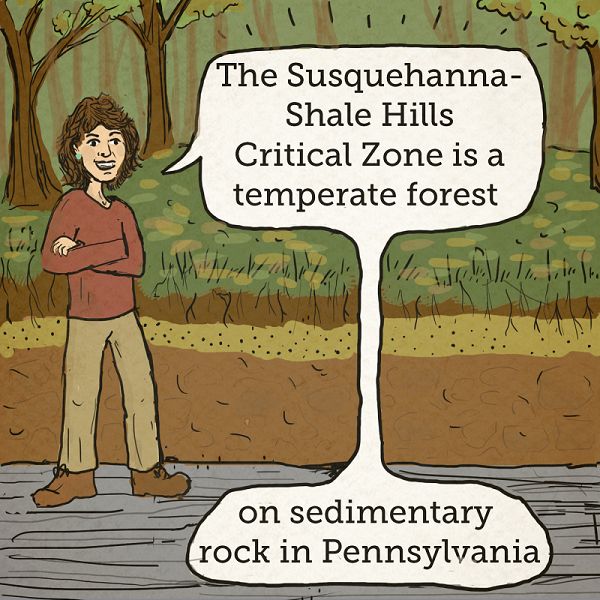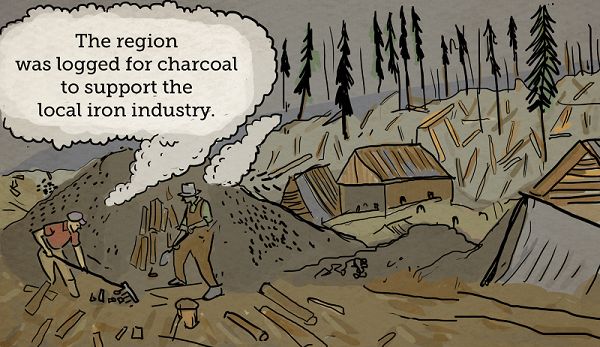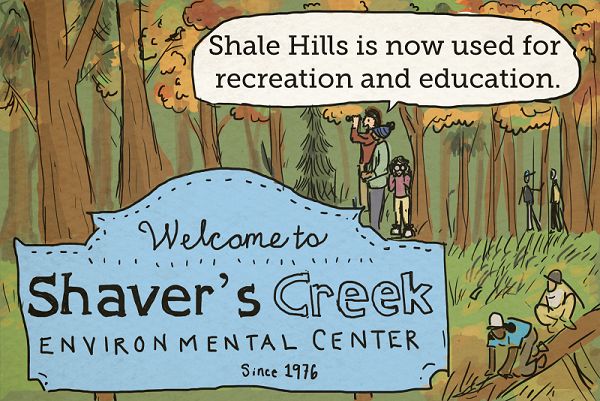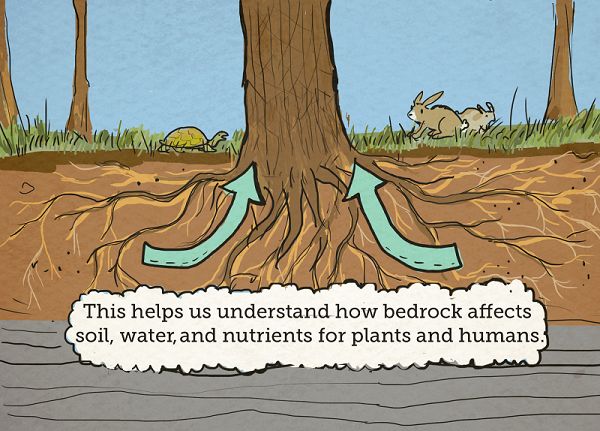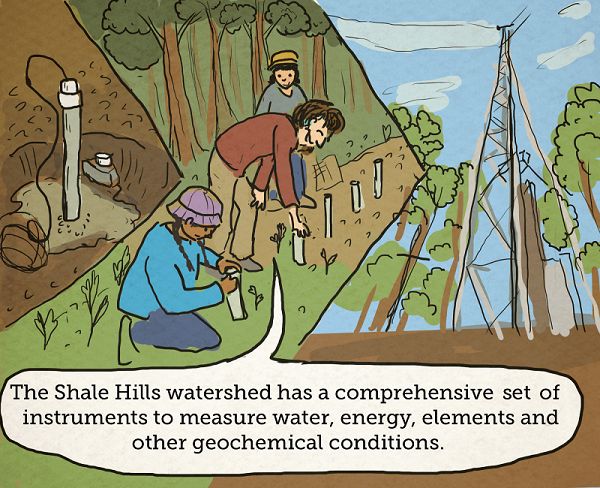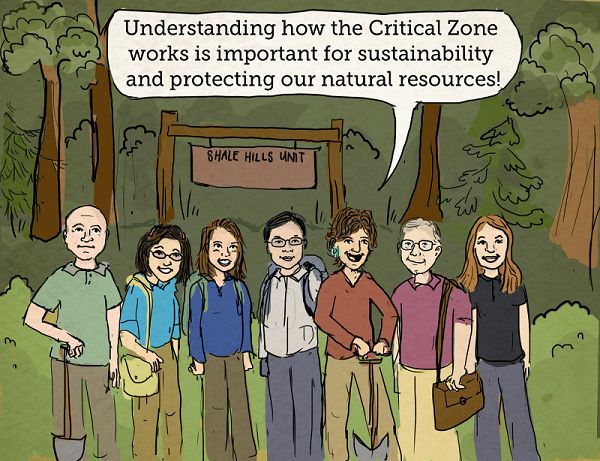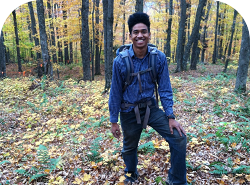Nov 19, 2016
An illlustrated introduction to the Susquehanna-Shale Hills Critical Zone Observatory!
By Justin Richardson and Jennifer Z Williams.
Illustrated by Alana McGillis
From left to right: Tim White, Lixin Jin, Jennifer Williams, Henry Lin, Sue Brantley, David Eisenstat, and Tess Russo. These are just some of the wonderful scientists who have led research at Shale Hills CZO.
Panel 1. A view of the ridge and valley landscape found at the Susquehanna-Shale Hills Critical Zone Observatory (SSHCZO).
Panel 2. Dr. Sue Brantley stands in a catchment, waves and says, “Hi, I am Dr. Sue Brantley and I lead the research conducted at the SSHCZO.”
Panel 3. A cross-section of the ground at the SSHCZO in Pennsylvania shows a temperate forest on sedimentary rock.
Panel 4. Sedimentary rocks here were deposited in a shallow ocean environment ~430 million years ago and uplifted ~300 million years ago to form the hills and valleys seen today.
Panel 5. Ironworkers work in the foreground as downed tree logs lay across the landscape. The region was logged for charcoal to support the local iron industry.
Panel 6. A sign for the Shaver’s Creek Environmental Center, a local education center, is shown. The SSHCZO region is now used for recreation and education.
Panel 7. Dr. Brantley looks at a map of instrumentation in the SSHCZO and says, “One of our main goals is to determine how the CZ will look and function in the future using observations made today.”
Panel 8. The instrumentation helps researchers understand how bedrock affects soil, water, and nutrients for plants and humans. A turtle and couple of rabbits sit by a tree with roots down into a soil profile.
Panel 9. The Shale Hills watershed has a comprehensive set of instruments to measure water, energy, elements and other geochemical conditions including soil lysimeters, wells, and a flux tower.
Panel 10. CZ researchers stand at the entrance to the SSHCZO catchment. Dr. Brantley says, “Understanding how the CZ works is important for sustainability and protecting our natural resources.”
Files
What is the Susquehanna-Shale Hills CZO?
(924 KB pdf)
Printable 2-page version of this comic.
What is the Susquehanna-Shale Hills CZO?
(924 KB pdf)
Printable 2-page version of this comic.

Justin B. Richardson
CZO INVESTIGATOR, STAFF. National Office outreach officer, Former CZO Post-Doctoral Fellow. Specialty: Soil biogeochemistry of plant-essential and toxic metals.
Outreach / Education Research EDUCATION/OUTREACH General Public K-12 Education
COMMENT ON "Adventures in the Critical Zone"
All comments are moderated. If you want to comment without logging in, select either the "Start/Join the discussion" box or a "Reply" link, then "Name", and finally, "I'd rather post as a guest" checkbox.
ABOUT THIS BLOG
Justin Richardson and his guests answer questions about the Critical Zone, synthesize CZ research, and meet folks working at the CZ observatories
General Disclaimer: Any opinions, findings, conclusions or recommendations presented in the above blog post are only those of the blog author and do not necessarily reflect the views of the U.S. CZO National Program or the National Science Foundation. For official information about NSF, visit www.nsf.gov.
Explore Further



